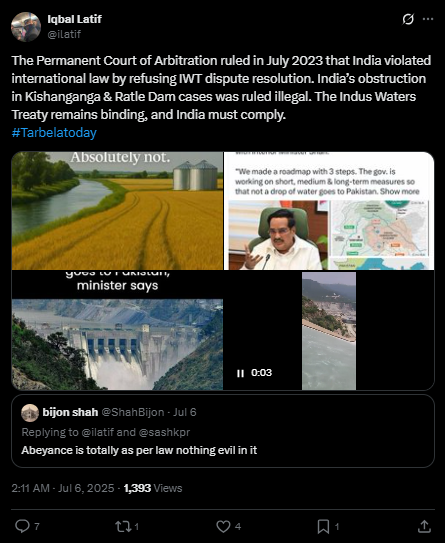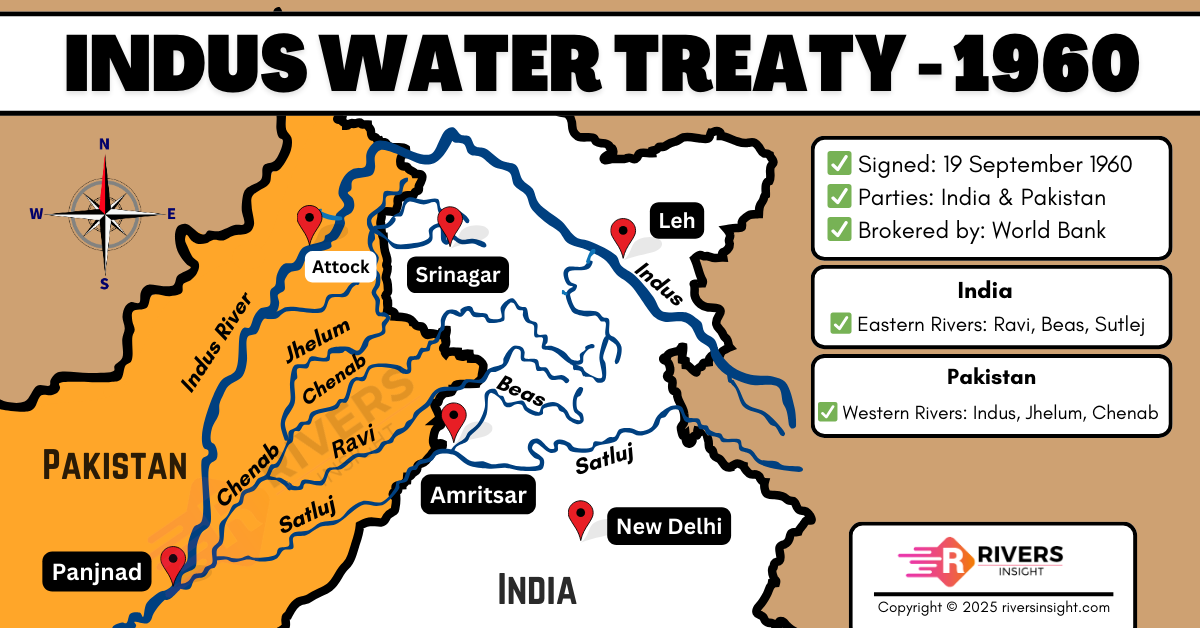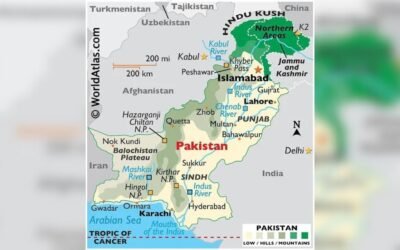The Indus Water Treaty (IWT) is one of the most significant water-sharing agreements in the world, which was signed in 1960 between Pakistan and India under the World Bank. The treaty has, for the most part, withstood the test of time despite its signatories being involved in on-and-off armed conflicts, standoffs, and all-out wars. It is a symbol of hope for cooperation and regional peace despite political conflicts, as, at its core, it deals with a resource that is vital for life: water. Recent times, however, have seen a geopolitical environment that is increasingly polarized on whether the treaty should be upheld or abandoned.
Background of the Treaty
The Indus River system, which has raised some of the earliest civilizations, includes the River Indus and its five main tributaries, namely Jhelum, Chenab, Ravi, Beas, and Sutlej. It originates in the Himalayas and flows through both India and Pakistan before forming a delta and emptying into the Arabian Sea. Like most other things, these waters were managed under a unified British Indian administration before Partition; however, after Independence, matters became complicated. The headwaters of these main rivers remained in Indian territory, but the majority of the basin’s irrigation system fell in Pakistani territory. Trouble started in 1948 when India stopped the Sutlej River flow from Ferozepur, thus trying to undermine Pakistan’s agrarian sector. This episode highlighted the need for a formal water-sharing treaty.
Pakistan has deemed India’s suspension of the Indus Water Treaty an ‘act of war’, following the deadly tourist attack in Kashmir’s Pahalgam.
Here’s what you need to know about India’s Indus Waters Treaty freeze https://t.co/1FfYGVCKUR pic.twitter.com/EPGu2NWo0B
— Al Jazeera English (@AJEnglish) April 24, 2025
Role of the World Bank
The World Bank intervened to provide a solution through a complex nine-year negotiation process, resulting in the signing of the Indus Water Treaty in Karachi on September 19, 1960, between then-Indian Prime Minister Jawaharlal Nehru and Pakistani President Ayub Khan under the auspices of World Bank Vice President W.A.B. Ilif. It went into effect on April 1, 1960.
Mechanisms of the Treaty
Through this treaty, the eastern rivers, namely Ravi, Beas, and Sutlej, were allocated to India, while the western rivers, Indus, Jhelum, and Chenab, were given to Pakistan, although India retained certain rights in a limited capacity, primarily for non-consumptive needs like hydropower, irrigation, and domestic use. A Permanent Indus Commission (PIC) was established by the treaty, which involves technical experts who oversee its implementation by exchanging data and resolving issues annually.

Source: X/@ilatif
Rising Threats to IWT
Although the Indus Water Treaty has served as a benchmark for water sharing agreements worldwide, being the longest-standing such treaty, recent years have put pressure on it due to environmental changes, global warming, and the politicization of waters by India. Over the past few years, India has repeatedly called for renegotiations, citing plans for new hydropower projects. Additionally, recent political tensions between the two countries have sparked speculation among experts that India might seek to withdraw from the Treaty’s terms. India has previously attempted to justify this stance by referencing other water treaties worldwide, such as Egypt’s agreement over the Nile, arguing that the Treaty’s terms are no longer valid today.
Politicization of Water
Recent years have seen instances of India trying to back off from the Treaty, citing technical issues to cover up political agendas to coerce and control Pakistan by meddling with its waters. They have also, at times, stopped water flow without prior notice. The recent Pahalgam attack saw a similar move by India when it blocked river flow to Pakistan despite having made no inquiry into the attack and its origins. Without proof of its link to Pakistan, India used it as an excuse to unilaterally back off from the treaty. This marked another instance of India politicizing a technical issue of water sharing by using it as a lever in a conflict of its creation. Following the Pahalgam blockade of rivers, the doctrine was put into action, although, contrary to their expectations, Pakistan did not take the bait. It was after this upset that India had to launch drone strikes on Pakistani territory to invoke a reaction.
In a detailed report by Al Jazeera, India can’t unilaterally suspend the Indus Treaty, water war may backfire.#AzaadDigital #AzaadEnglish pic.twitter.com/DGrF4pa1Wp
— Azaad English (@azaad_english) July 13, 2025
Future Implications
The future consequences of conflicts over water are bleak. Since the Treaty lacks an exit clause or expiration date, any changes to it can only be made with mutual consent. However, India’s unilateral suspension of the treaty places the entire agreement in an uncertain and undefined legal space, potentially leading to more conflicts between the two signatories. Beyond political concerns, there are also humanitarian risks. Pakistan, an agrarian economy, depends on these western rivers for 25% of its GDP through irrigation and agriculture. Unscheduled blockades of river flow without shared information can severely disrupt crop cycles and cause droughts or floods. Pakistan already faces flash floods due to environmental changes and global warming, and such disruptions will only worsen the devastation to an economy highly reliant on the steady flow of these rivers. The irregular flow also has serious ecological consequences, especially for the Indus Delta. Therefore, both countries must cooperate on this Treaty, as it directly impacts the livelihoods and economies of millions on both sides of the border.







